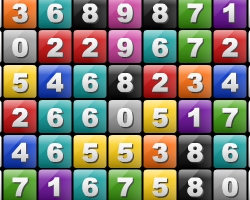If your kids or students have fear towards math, they are not alone. Math anxiety or phobia is real and occurrs amoung thousands of people.
In "Overcoming Math Anxiety", Sheila Tobias defined mathematics anxiety as feelings of tension and anxiety that interfere with the manipulation of numbers and the solving of mathematical problems in a wide variety of ordinary life and academic situations. Math anxiety can cause one to forget and lose one’s self-confidence.
A regular part of the traditional teaching and learning of mathematics are imposed authority, public exposure which may lead to the risk of being embarrassed and deadlines associated with time. Research have shown that these pressures have long been recognized as sources of unproductive tension among many students.
Thus, we must re-look at our teaching and learning process, where put more emphasis on less lecture, more student directed approach and more constructive discussion.
Here are some suggestions:
1. Create a classroom atmosphere that will make children feel more successful.
This can be done by handling incorrect responses in a positive way. By doing this, we encourage student participation and enhance their confidence level.
2. Present lessons in variety of ways to cater for different learning styles.
Every student is capable of learning, but they may learn better in different ways. The theory of multiple intelligences addresses the different learning styles. Lessons are presented for visual/spatial, logical/mathematics, musical, body/kinesthetic, interpersonal and intrapersonal and verbal/linguistic. This calls for lessons to be presented in a variety of ways. For example, different ways to teach a new concept can be through play acting, cooperative groups, visual aids, hands on activities and the use of technology. Students today have a need for practical math and also the need to see its' relevance to their everyday lives. Students learn math better when they are allowed to be engaged in exploring, experimenting, conjecturing, and thinking rather than, engaged only in rote learning of rules and procedures.
3. Parents relate math in a positive perspective
Math is often associated with pain and frustration. Monthly bills, household grocery bills and income tax forms are a few of the negative experiences associated with numbers. These numbers are often associated with frustration and problems thus making math seen in negative ways. Parents should show their children how numbers are successfully used by them in positively pleasant ways, such as in cooking, gardening, sports, home repairs and problem solving. for an example, mothers can ask children to help measure ingredients and together own the success of the end product. They can also discuss on the need to have the right measurement in cooking.
4. Infuse fun and humor in every opportunity
We can reduce tension and phobias by incorporating fun and humor. Children enjoy cartoons and jokes. Teachers can use it as set induction and a starter for class discussion. Parents can use cartoons to introduce a concept. Play games that are based on math concepts. Some games that are beneficial and enjoyable to learners are cards playing that involved numbers; board games like Monopoly, Snakes and Ladders and Ludo; and puzzles like Tangrams.
5. Make use of manipulatives
Most children will master mathematical concepts and skills more readily if they are presented first in concrete, pictorial and symbols. For example, manipulatives are concrete objects used to teach a concept. By using manipulatives, pictures and symbols to model or represent abstract ideas, the stage is set for young learners to understand the abstractions they represent. Students enjoy the change from lecture and books and they are more inclined to explore with manipulatives and show greater interest in classwork.
6. Encourage cooperative learning
Cooperative learning provide students a chance to exchange ideas, to freely ask questions, explaining to one another, to clarify ideas in meaningful ways and to express feelings about their learning. Not only such skills can reduce tension and phobias in math, it will also be greatly beneficial throughout their adult working life.
Today, the needs of society require a greater need for mathematics. To reduce math phobia, math must be looked upon in a positive light. This calls for teachers to review traditional teaching methods to address to students’ learning styles by making math approachable in a variety of creative and innovative ways. Parents can also help support math learning at home in many ways. When our kids and students see math as fun, they will enjoy it, and, the joy of mathematics could remain with them throughout the rest of their lives.
Further reading:
Spikell, M. (1993). Teaching mathematics with manipulatives: A resource of activities for the K-12 teacher. New York: Allyn and Bacon.
Tobias, S. (1993). Overcoming math anxiety. New York: W. W. Norton & Company.
Marilyn Curtain-Phillips teaches high school mathematics and is the author of Math Attack: How to Reduce Math Anxiety in the Classroom, at Work and in Everyday Personal Use,(1999)










No comments:
Post a Comment